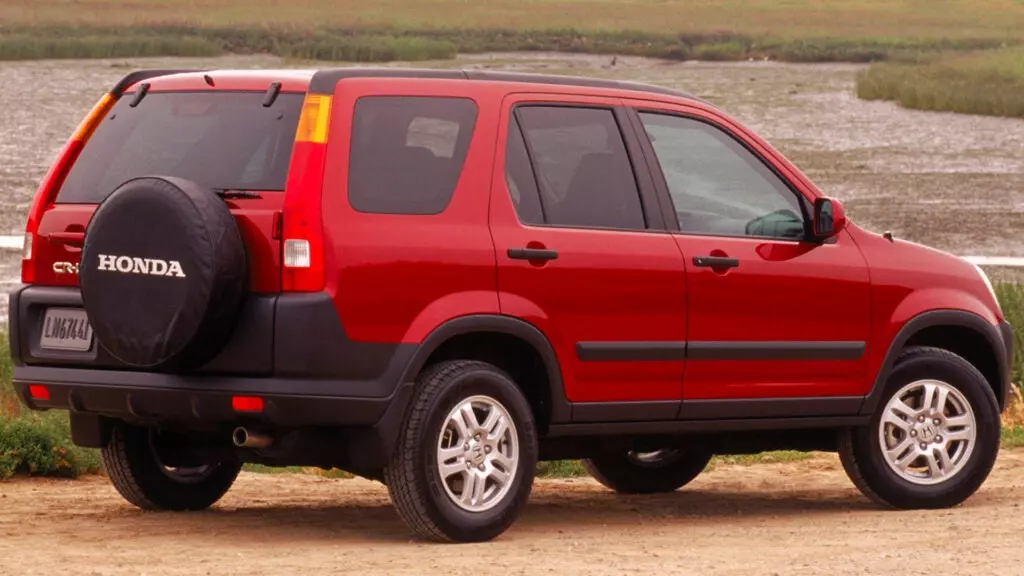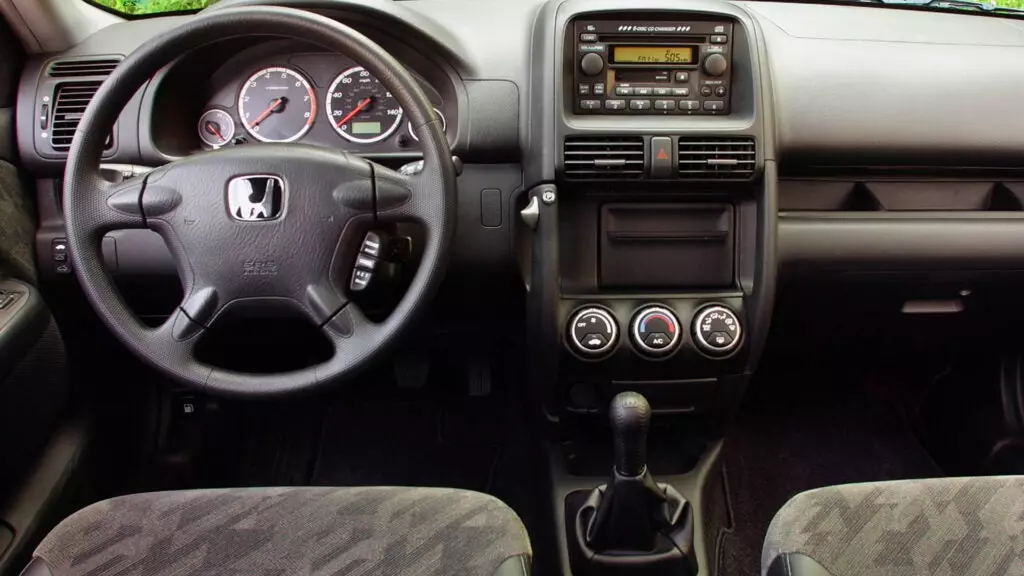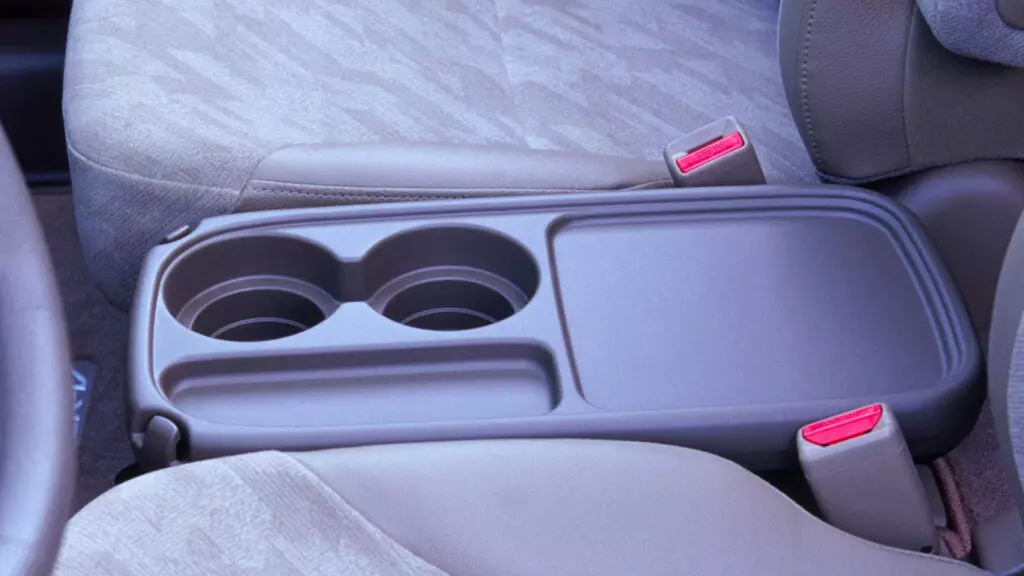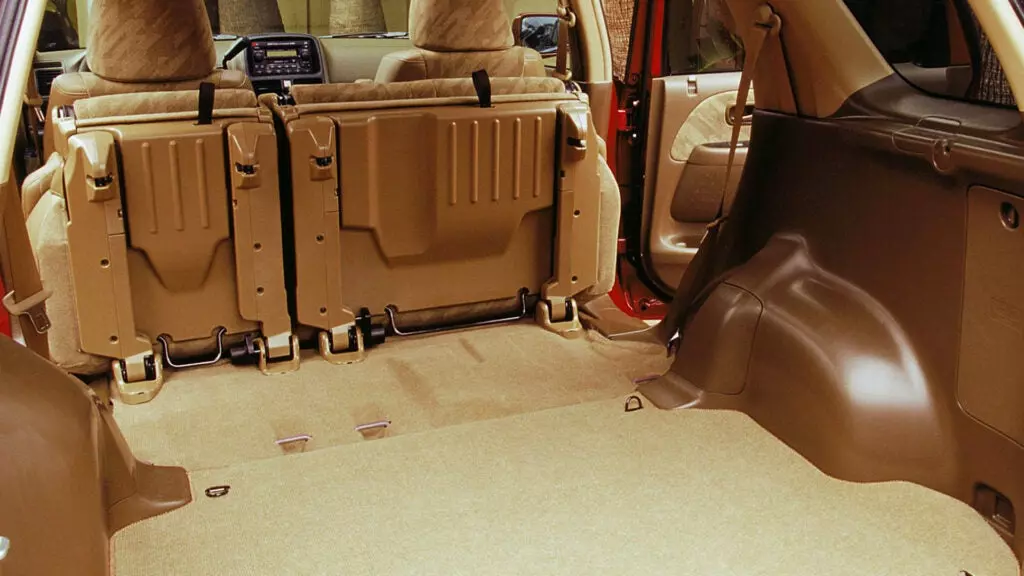Welcome to the second-generation Honda CR-V Car Autance. As you scroll down, you’ll learn all about this vehicle’s qualities, features, finer points, and shortcomings. If you’re thinking about buying one of these, want some help maintaining or modifying one, or just want to deepen your knowledge for the next round of car trivia, you’ve come to the right place.
This is a living document that’s updated as we learn (and confirm) new valuable information. That’s also why the comment section is open! Our staff will try to reply, and if they can’t, you might get some insight from another reader. Don’t be shy; the more dialogue we have, the better this Car Autance will get.
–Andrew P. Collins, Car Autance Editor-In-Chief
(Disclaimers, Disclosures: Some Car Autance will have links to specific forums, groups, brands, shops, or vendors for parts shopping and such. We have no sponsorship deals or official affiliation with any of them unless explicitly stated.)
- The Short Story
- Pictures
- Fast Facts
- Spotter’s Guide
- Rarity
- Check This Car Out If …
- Important Trim Levels and Options
- Year-To-Year Changes
- General Reliability and Ownership Costs
- Obscure Details
- Red Flags and Known Issues
- Recalls
- Where To Buy Parts
- Aftermarket Support
- Popular Modifications
- Key Technical Details
- Fluids, Filters, and Capacities
- Factory Service Manuals
- Other References and Resources
- Professional Reviews
- Owner Reviews
- What They’re Worth Now
- Where To Find One For Sale
- What To Ask A Seller
- Competitors To Consider
- Photo Galleries
- Pop-Culture References
- Enthusiast Inquiries
- Downloadable Paperback Car Autance
- Comments Disclaimer
The Short Story
In the early 1990s, the SUV started to transition from farm tools to family cars — big time. Range Rovers, Ford Explorers, and Chevrolet Tahoes were flying off lots, but not everyone needed or wanted something that big or capable. As a response, Toyota, Nissan, Honda, and a few other carmakers took their car chassis, added some boxy styling and rough-‘n’-tumble cladding, sometimes knobby tires, and sold them as SUVs. One such iconic car was the Civic-based Honda CR-V.
The second-generation CR-V got a bit bigger and more powerful and only further grew in sales numbers. Now, the CR-V is Honda’s best-selling vehicle. But this model from the early 2000s represents a great value. It’s practical and cheap to run. That’s a good combination right there.
Pictures
We’ll link to some galleries below if you want to feast your eyes on the gen-two CR-V from a bunch of angles. Here are a few quick pics so you know exactly which car we’re talking about.
Fast Facts
Most people say CR-V stands for compact recreational vehicle. Whether that was truly Honda’s original intention or something cooked up after an arbitrary three-letter name was picked, we might never know.
The CR-V’s 2.4-liter engine, known in Honda circles as the K24, was also used in the Honda Accord. European and Japanese models got a smaller, 2.0-liter engine of the same family: the K20.
In true enthusiast form, this generation could be had with a five-speed manual transmission (and all-wheel drive).
Honda’s Real-Time 4WD all-wheel-drive system can sense when the front wheels slip too much and can engage a clutch and turn the rear wheels. The system can’t be activated manually, however.
Spotter’s Guide
The second-gen CR-V is more trucklike than the current bulbous hatchback styling. All CR-Vs have big headlights, a four-point front grille with a big Honda logo up front. In the rear, you’ll find the CR-V’s characteristic high-mounted floor-to-ceiling taillights. The rear hatch door, is side-swinging, with a characteristic full-sized spare tire mounted to the back.
The CR-V’s style has been mostly consistent across its lifespan, but there are a few key differences between the cars.
CR-V EX level trims are all all-wheel drive and come with privacy glass, a stark contrast to the LX’s clear glass. All-wheel drive was an option on the LX, and AWD CR-Vs have a small Real-Time 4WD sticker on the back. If you’re not sure, a quick glance at the rear suspension will reveal a big differential and half-shafts going to the rear wheels.
CR-V EX models have stylish alloy wheels compared to the steel wheels on LX trims.
In 2005, Honda gave the CR-V a facelift. Changes were minor: slightly different headlights, a bit more chrome up front. In the back, the rear tailights were revised, with the amber turn-signal lenses changing from orange, to crystal clear (with orange bulbs).
The facelift also brought a Special Edition model, which included body-colored bumpers.
Rarity
Honda sold more than 700,000 second-gen CR-Vs. They’re not rare, but some of the more enthusiast-oriented models, such as the AWD 5MT models, are somewhat rare.
Check This Car Out If …
You’re looking for a solidly reliable, very spacious crossover that can get you unstuck from snow in the winter.
Important Trim Levels and Options
The CR-V EX’s options list was pretty short, aside from a few doodads and dealer-installed accessories. Gold pack badges, anyone?
The most notable is the 2004-2005 Special Edition, which included body-colored bumpers and leather seats.
Year-To-Year Changes
2002 model year
- Introduced in 2001 as a 2002 model year.
2003 model year:
- Unchanged.
2004 model year:
- Unchanged.
2005 model year:
- Facelift with revised front grille, headlights, and taillights.
- Automatic transmission gains a gear, is now a five-speed.
- EX Special Edition introduced with body-colored bumpers, leather seats.
2006 model year:
- Unchanged.
General Reliability and Ownership Costs
The Honda CR-V’s reliability is generally very good. Parts are plentiful and cheap, and many mechanics can find their way around the CR-V’s accessible engine bay.
The CR-V’s fuel economy is kind of so-so but not so bad compared to a truck-based SUV of the same era.
Obscure Details
The Honda CR-V is based on the Civic. Like the Civic, it switched to MacPherson struts from double wishbones on this generation.
This is the last U.S.-market CR-V that could be had with a manual transmission.
All CR-V cargo covers have legs and convert into a portable picnic table. It really is a recreational vehicle.
Red Flags and Known Issues
Rear differential. With age, and especially if the owner used their SUV as an SUV, water can infiltrate the rear-differential fluid and screw up the viscosity. This manifests itself with whining or roaring or choppy acceleration when AWD engages.
Universal joints. The CR-V’s propeller shaft (the shaft that provides power to the rear wheels), has staked-in universal joints that allow the shaft to flex a bit when the vehicle turns and moves. Over time, these joints can freeze up with corrosion, leading to excess vibrations over the road.
Missing driveshaft. The CR-V can sometimes have problems with the AWD system. Some owners opt to simply remove the propeller shaft (making the CR-V FWD) instead of fixing the issue.
AC compressor. The CR-V’s air-conditioning compressor can self-destruct, sending metal fragments through the entire system. CR-V owners call it the black death, as the fragments mix with the oil and refrigerant to create a gross black slurry that leaks from the AC line seals.
VTEC oil control valve (somewhat rare). Infrequent, but occasionally the VTEC oil control valve can fail, causing a check-engine light and limited performance.
Recalls
Like most Hondas, the CR-V is affected by the Takata airbag scandal, and many cars will likely need (or have gotten) their airbags replaced.
Most recently, the CR-V was recalled for faulty power-window master switches.
You can pop your VIN (the number stamped in the bottom corner of your windshield) into the NHTSA site here to see if your CR-V has any outstanding recalls.
Where To Buy Parts
Since the CR-V is a common car, parts can be found nearly everywhere car parts are sold. Amazon, RockAuto, AutoZone, Advance Auto Parts. Some more specialty fluids, like the dual pump fluid for the differential, can only be ordered at the dealership.
Aftermarket Support
The Honda CR-V is a Honda, after all, so there are many paths to choose from for CR-V modification.
If you’re into a street tuner and handling setup, the CR-V has options to make the CR-V as sporty as possible on road. If you’re seeking a more off-road style modification, the CR-V has that, too.
The Honda K24 engine is a common, modifiable engine. There’s not a lot of stuff actually bespoke for the CR-V, but lots of mods exist for the K24 engine.
The Honda-Tech forum has a nifty thread showing nearly every aftermarket option for the second-generation CR-V.
Popular Modifications
By far, either a lift kit or a lowering kit are the most popular mods for second generation CR-Vs. Because of the recent popularity of overlanding, more CR-V owners tend to gravitate towards a lift kit and chunky tires.
Be careful of those half shafts, though. CR-V’s will wear out half shafts faster when the suspension geometry is changed either with a lift kit or lowering kit.
Key Technical Details
Engine: 2.4 liter, dual-overhead-cam (DOHC) engine with four valves per cylinder, producing 160 horsepower, and 162 pound-feet of torque. The block and head are both aluminum.
Transmission: Five-speed manual, four-speed automatic, or five-speed automatic (2005 and up).
Drivetrain: Front-engine, front-wheel drive or all-wheel drive.
Suspension: MacPherson struts in the front (with a 27-mm stabilizer bar), and a double-wishbone multilink in the rear (with an 18-mm stabilizer bar)
Wheelbase: 103.1 in (2618 mm)
Overall length: 178.6 in (4537 mm)
Curb Weight: 3,200 to 3,350 pounds, depending on trim and options.
Fluids, Filters, and Capacities
Fuel: Honda recommends 87 octane, no need for premium.
Battery size: 51R.
Engine oil: 5w-20. Honda insists on oil changes every 5,000 miles.
Oil filter: The CR-V uses a spin-on filter, Honda Genuine part number 15400-PLM-A02.
Air filter: The part number is 17220-PNB-505 for the OEM air filter. Honda recommends replacement as needed.
Cabin air filter: The OEM replacement filter is 80292-S5D-406. Honda recommends changing this filter every three years or 30,000 miles, whichever comes first.
Transmission oil: Honda recommends the transmission fluid is replaced every 120,000 miles. For the automatic transmission, it uses Honda ATF, either four or five quarts depending on year, or if it is a four-speed or five-speed transmission.
The manual transmission fluid should be replaced every 120,000 miles or six years, whichever comes first. The CR-V uses Honda Genuine Manual Transmission Fluid.
Transmission filter: The automatic transmission’s filter is internal and integrated into the transmission itself, so it is unserviceable. There is a transmission line filter, but there is no service interval. If you insist on replacing this filter, the part number is 25430-PLR-003.
Differential oil: On FWD cars, the differential is integrated into the transmission. On AWD cars, Honda recommends replacing the rear differential fluid every 90,000 miles. It uses Honda Genuine Dual Pump Fluid II.
Transfer case fluid: The AWD car’s transfer case is integrated into the transmission and uses the same automatic transmission fluid.
Coolant: Honda recommends changing the coolant every 60,000 miles or five years, whichever comes first, after the first 120,000 miles. It uses Honda Long Life Coolant, Type 2. It is blue.
Power steering fluid: Honda does not give a specified fluid change interval for power steering. These power steering systems use Honda Genuine Power Steering Fluid.
Brake fluid: The OEM rating is DOT3 Spec, but Honda has its own specific brand of Honda Genuine DOT3 Spec brake fluid. Honda recommends replacement every three years, regardless of mileage.
Spark plugs: Honda recommends the spark plugs be changed every 120,000 miles. The OEM spark plug number is 9807B-5617W, and it has a 0.044-inch gap. These plugs are rebranded NGK IZFR6K11. There are many OEM equivalent aftermarket options with similar or superior quality.
Factory Service Manuals
The great people at the CR-V Owners Club have sourced a factory service manual, here.
Other References and Resources
Honda-Tech and the CR-V forums have the most comprehensive group of owners and gearheads that know the trucklet inside and out.
Reviews
“Tested: 2002 Honda CR-V EX” (Car and Driver, November 2001)
John Phillips was impressed with the CR-V’s much improved dynamics over its predecessor and its surprising dynamics.
“For one thing, the classic Honda shifter offers the sort of short, light throws you’d praise in a Prelude. Beyond 50 mph, the newly relocated steering rack now locks onto straight-ahead like Thor gripping lightning bolts. There’s surprisingly little roll for a vehicle nearly as tall as a Toyota Sienna, such that the pilot begins making odd pronouncements: ‘good pedals for heel-and-toeing,’ for instance, which isn’t a phrase commonly associated with SUVs.”
Real Owner Impressions
Anybody owned one of these and want to tell us about it? Leave a comment, and we’ll reach out.
What They’re Worth Now
The CR-V has held its value, but at the end of the day, it’s now nearly a 20-year-old car in its oldest guise, and most examples are pretty well used. A higher mile, early example can be had for less than $3,500.
Lower mile or rarer trimmed (AWD with manual transmission) can still crest $7,000 for well-kept examples.
Where To Find One For Sale
The second generation CR-V is too old to pop up at big chains like Carvana or Carmax. Your best bet is to check local classified listings — smaller dealership chains, Craigslist, Facebook Marketplace, private sellers. The CR-V owners forum classifieds are also a good place to check, too.
What To Ask a Seller
The CR-V’s pedestrian bones mean that vetting for a potential purchase shouldn’t be super complicated.
These vehicles can have air-conditioning issues. (Black death, remember?) Ask the seller if they’ve had a/c problems. Has the compressor been replaced?
Competitors To Consider
The Honda CR-V is the pioneer in the now-ubiquitous small-crossover segment. Nearly every brand has a small SUV that could be compared to the CR-V, but here are a select few:
2001-2006 Toyota RAV4. The RAV4’s AWD system is superior as it is a full-time AWD setup with a viscous coupling, compared to the CR-V’s part-time setup. However, the interior is smaller, and the 2.4-liter in the later models can be problematic.
2001-2010 Ford Escape/Mazda Tribute. The Escape is a bit more trucklike in the crossover realm, and the 2001-2004 4WD system is also superior to the CR-V’s, too. These models tend to have rust issues if you’re in a snowbelt state, and the powertrains aren’t as thrifty or reliable as the Honda.
1999-2004 Chevy Tracker/Suzuki Vitara. The Tracker, Vitara, and Grand Vitara, are full body-on-frame designs, with solid rear axles and RWD or 4WD. Off road, these trucks are very modifiable and will go a lot of places that a CR-V could only dream about. Yet, their on-road dynamics are generally not good, the interior is small. Suzuki is a dead brand in the U.S., so replacement parts won’t be easy.
Photo Galleries
Favcars.com and NetCarShow have pictures of U.S.- and international-spec CR-Vs.
Pop-Culture References
Not a lot going on here. It looks like Timothy Olyphant drives a second-gen CR-V at some point in “The Santa Clarita Diet.” This car doesn’t seem to make too many significant appearances in pop culture.
Enthusiast Inquiries
Every car has a collection of common questions that pop up in forums and Facebook groups whenever new blood joins in. We hope a lot of those have been answered above, but here are some Honda CR-V FAQs we wanted to dig into.
Yo, this thing is dope! It’s got four-wheel drive, so it’s unstoppable off-road, no?
OK, so the CR-V’s Real-time 4WD definitely powers all four wheels, but the rear system has a lot of caveats. For starters, the system only activates when the front wheels slip. After the slippage is corrected, it shuts itself off. It will also stop sending power to the rear if the rear differential gets too hot or because of a number of other issues. It’s a fine system for a lot of people, but it has limitations.
I’m going to turbo/supercharge/build the crap out of my car.
By all means, go for it. There are a handful of built CR-V’s making well over 300 horsepower. The K24 engine is a great base to start tuning.
Downloadable Paperback Car Autance (Coming Soon)
If you’re old school and like to keep reference notes on paper, or you’re just a completionist and want a free accessory for your Honda CR-V, we’re going to have a printable owner’s manual supplement-type thing to download soon.
Comments Below
You’ve reached the end of the Honda CR-V car bible and are about to scroll into the comment section. If any questions were left unanswered in the text above, try posing it in the space below. Unsolicited Honda CR-V tips are also welcome.














